The peregrin falcon is the fastest animal in the world. Able to reach maximum speeds approaching 400km/h!
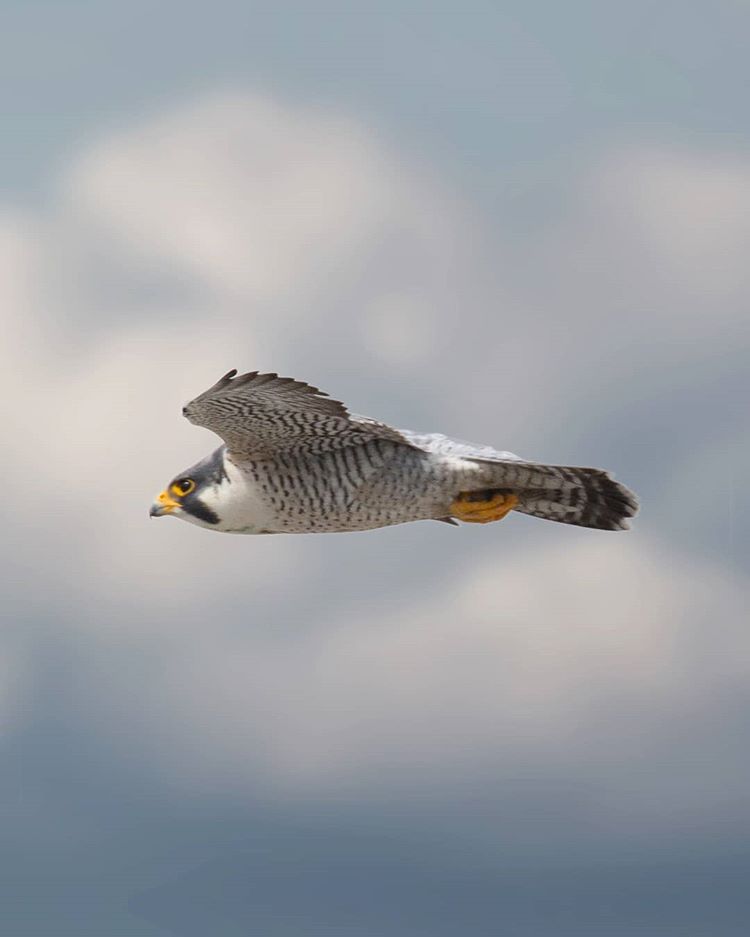
@elizabeth__bruno and I recently moved into a condo, and to our delight, there are a group of peregrin falcons that have called our tower and surrounding towers, home. One morning I heard a loud chirping sound coming from my balcony. I quickly got up and saw that a paregrin was sitting on the glass edge of my balcony, 3 feet from my window! It flew away as soon as it saw me, but what an experience that was.
Last night it was amazing to watch at least 2 peregrine Falcons flying from balcony to balcony in front of a gorgeous fluffy cloud backdrop. These birds are truly acrobats of the sky – watching how they can effortlessly change direction in the air is amazing.
The peregrin falcon is the fastest animal in the world. Able to reach maximum speeds approaching 400km/h!
Having one of the peregrines land on our balcony today and stay for over 5 minutes was such a cool experience and one of my most memorable wildlife encounters to date! This photo was taken a few days ago as it flew past our balcony. I’ve been trying to learn how to tell apart the males and females. The females are supposedly about 1/3 larger than the males and have some subtle feather pattern differences, but to my untrained eye it’s really hard to tell, especially when they are flying.
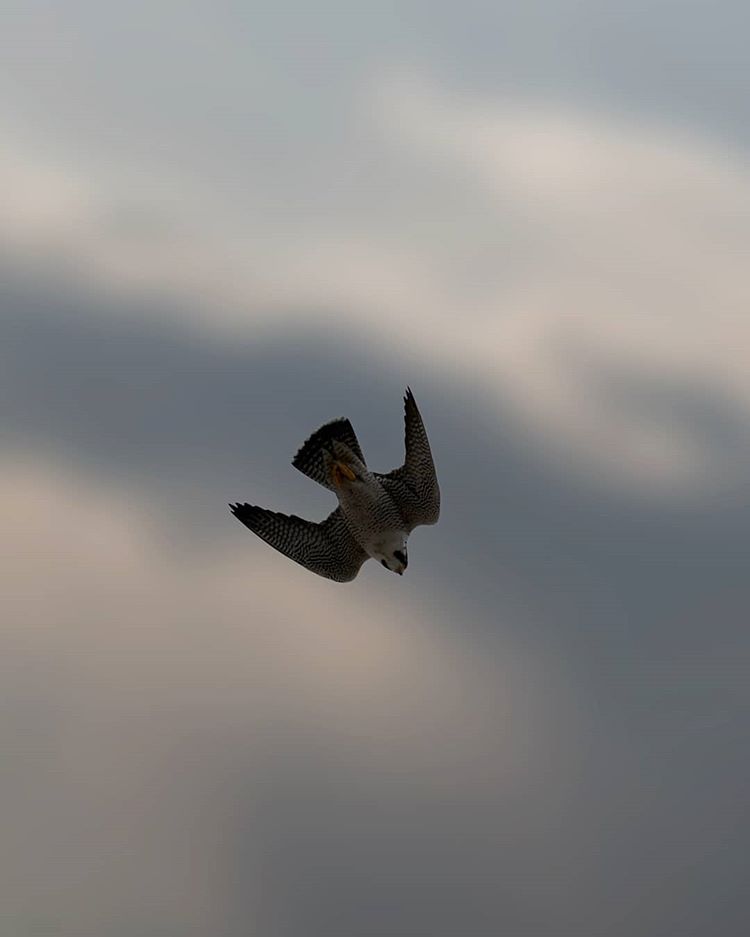
This is a shot I’ve been wanting to capture for the past month: a peregrine falcon in a stoop (aka divebomb). I saw this falcon perched at the very corner of a nearby condo tower, eyeing the smaller birds below. I positioned myself so I could capture him if he decided to take off, and he did. I tracked him as he drove down. This was the best frame of the bunch, he was out of frame in the next half second (captured at 1/3000). He was far from his top speed in this dive, but he was going fast enough to make following him challenging. Peregrines can easily climb a thousand feet or more, waiting for that perfect moment to dive down and snatch a pigeon, or even duck from mid air.
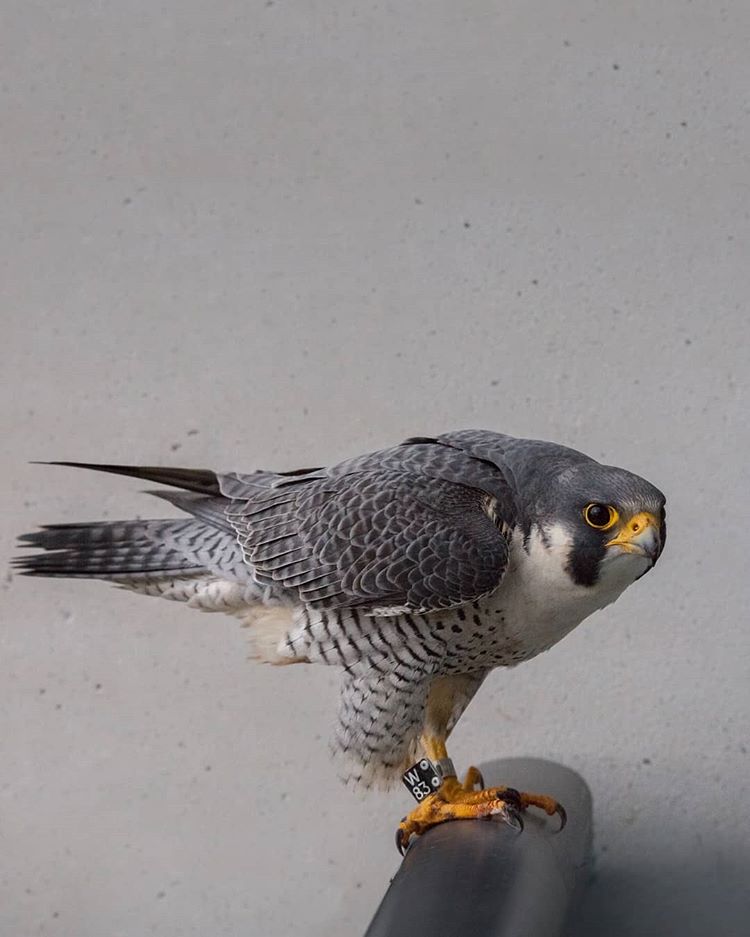
Here is the first of a few photos I took of the male peregrine falcon that landed on @elizabeth__bruno and I’s balcony. This shot was taken just after he initially landed. He was flying towards the building about 20 feet below our floor and came up at the last minute to land. You can really see those dark “sideburn” feather patches on either side of its face. These serve much the same purpose as the black paint under the eyes of professional athletes, it cuts down sun reflections into their eyes. Speaking of eyes, their vision is razor sharp. They are able to spot prey up to 1km away.
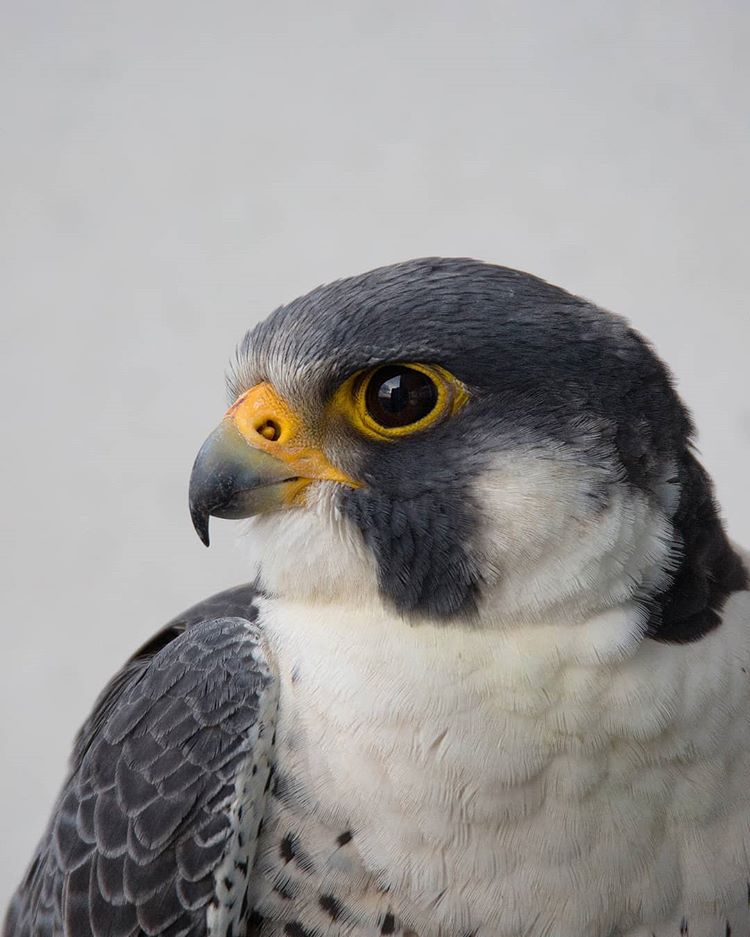
One of the most fascinating facts I’ve learned while researching peregrines is their nostril design. You’d think nostrils are pretty straightforward right? Just little holes that allow air into the lungs, however when traveling at such incredible speeds 2 large obstacles are faced: 1) Getting air into the lungs and 2) Not damaging the lungs from the emence pressure. The answer to the first obstacle amazingly was the key that allowed engineers to develop the jet engine!: “As planes got faster and faster, the engines started choking out at a certain speed. It seems that the air, instead of going into the cowl of the engine, encountered a wall of still air and engine cowl and so split and went around the engine. Puzzled, the researchers wondered how the falcons could still breathe at such incredible speeds. Looking at the falcon’s nostrils, they found the answer. In the opening of the nostril is a small cone that protrudes a bit. Fashioning a similar cone in the opening of the jet engine, they discovered that the air could pass into the engine even at great speed.” (Chaffee Zoo 2007). Now that we know how the air is able to travel into the lungs how does the pressure not hurt the falcon?: “The air pressure from a 200 mph (320 km/h) dive could possibly damage a bird’s lungs, but small bony tubercles in a falcon’s nostrils guide the shock waves of the air entering the nostrils (compare intake ramps and inlet cones of jet engines), enabling the bird to breathe more easily while diving by reducing the change in air pressure.” (Wikipedia 2008). So so cool.
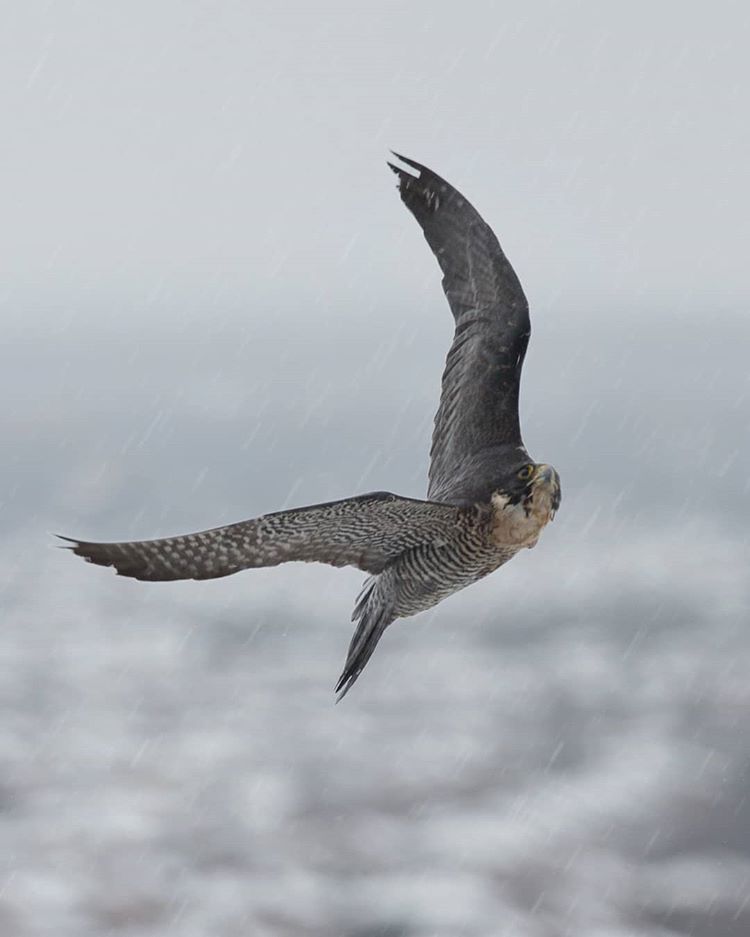
Snow sleet or hail, it’s amazing to watch these Falcons hunt for food. The abstract background sort of looks like water but it is the snow covered tops of houses. We are having an interesting spring here in Southern Ontario (as I’m sure you have already heard many times on social media lol).
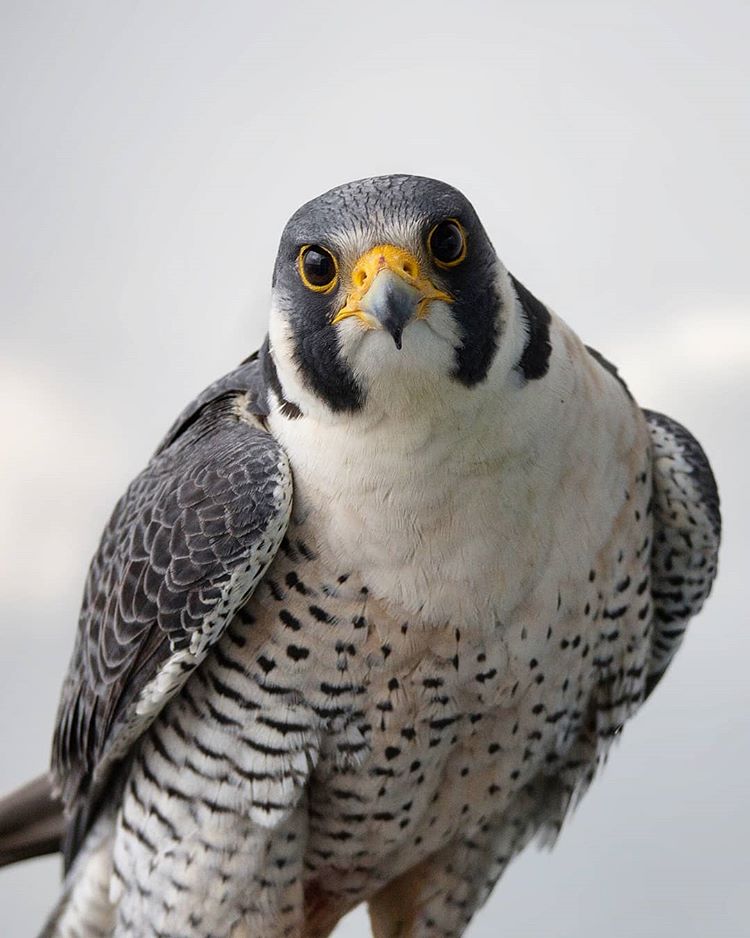
When this guy landed on my balcony railing it was almost as if he said “enough of these far shots, in ready for my close up” lol. I had a lot of fun taking his portrait. I didn’t know peregrines were such inquisitive birds but this guy was definitely curious and checking me out. I can imagine what these birds must wonder about us human cliff dwellers haha. I have a few more shots from this shoot I’ll post this week. I hope you enjoy 🙂
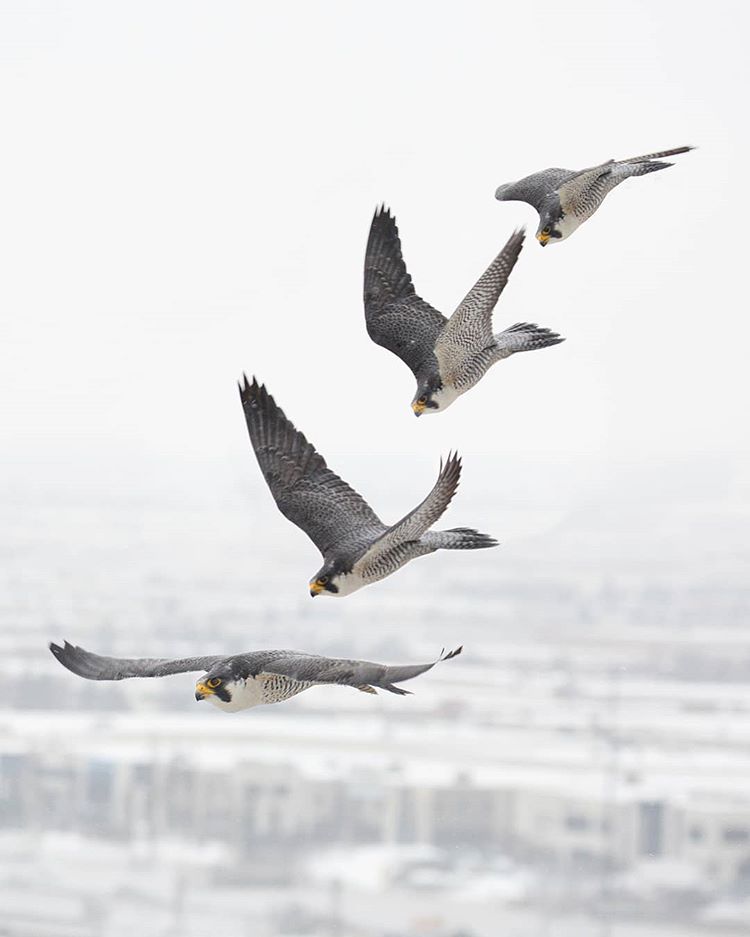
I just love to watch these birds fly over the city. Stills don’t always do justice to their elegant aerobatics – even video can’t always capture the beauty of their flight. I’ve been using the technique of combining a few shots taken in burst mode together and I think it gives a neat way of seeing their flight in a different way. It takes a bit of work to create, but I think it’s worth it. Hope you enjoy! PS the position of the frames are not 100% true to their flight path but instead placed artistically. I am working on another composite that will be very accurate to their actual flight path.
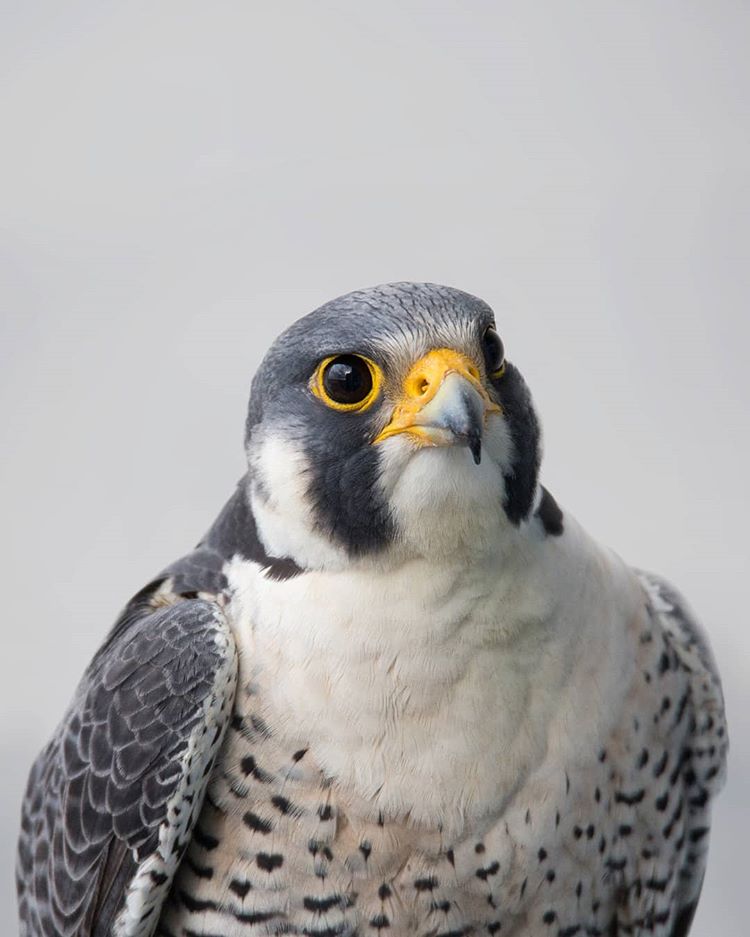
“Chin up and look slightoy off into the distance please Mr. Falcon… perfect… just like that!”. He looks so distinguished in this pose haha. The only thing he is missing is a monocle lol. .
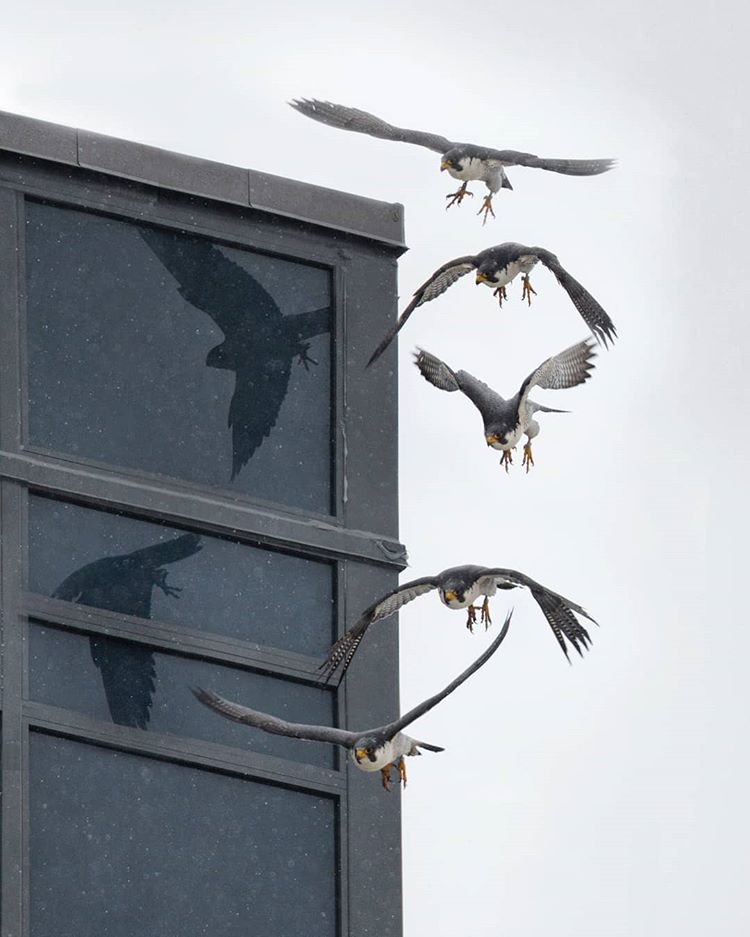
The peregrines love to perch right at the top corner of the adjacent condo when they make a kill. After they finish their meal, they fly back to their nest (I assume). I believe this particular falcon is the banded male I have been photographing. The condo details beside the bird made it easy to line up each shot exactly when I was layering them so this composition is true to its flight path. I love how these birds are such efficient flyers. They almost fall of the edge and then let the wind carry them. Happy Friday! Make sure to get out this weekend if you can and enjoy spring 🙂
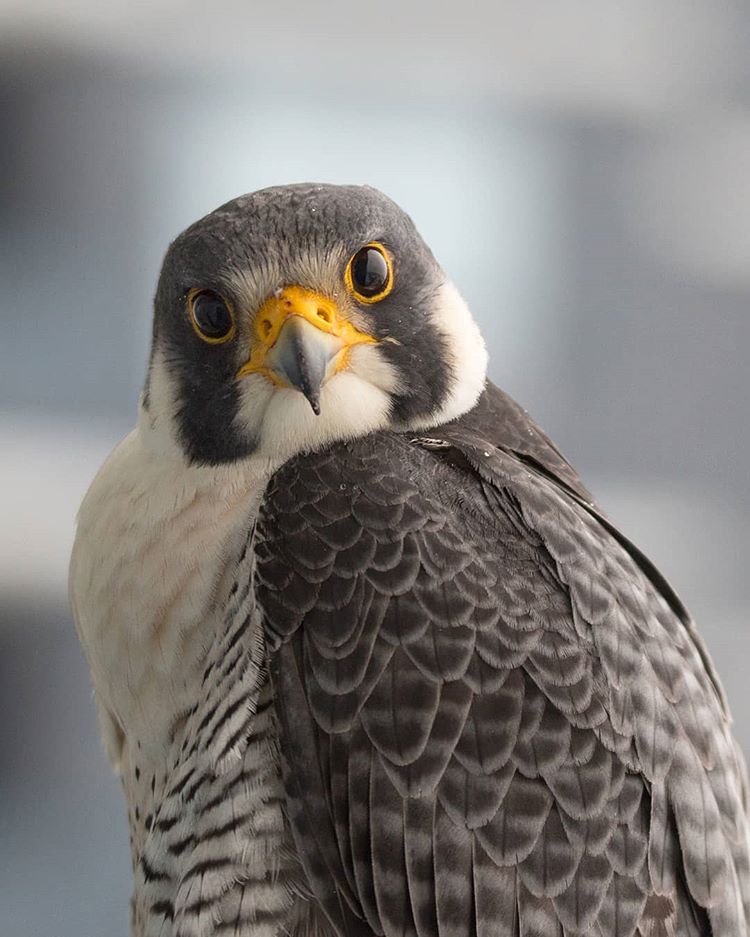
This is a first of a series of shots I took of our 2nd peregrine falcon balcony visitor. I believe this is the same Male from before. Unfortunately I couldn’t tell if he was banded this time or not – I’ve been learning quite a bit more about peregrines, like the fact that they mate for life. They will go their own separate ways during the late summer, but will come together again for breeding season in the spring. They have quite an elaborate set of mating rituals that consist of the Male trying to impressing the female with his hunting abilities and acrobatics.
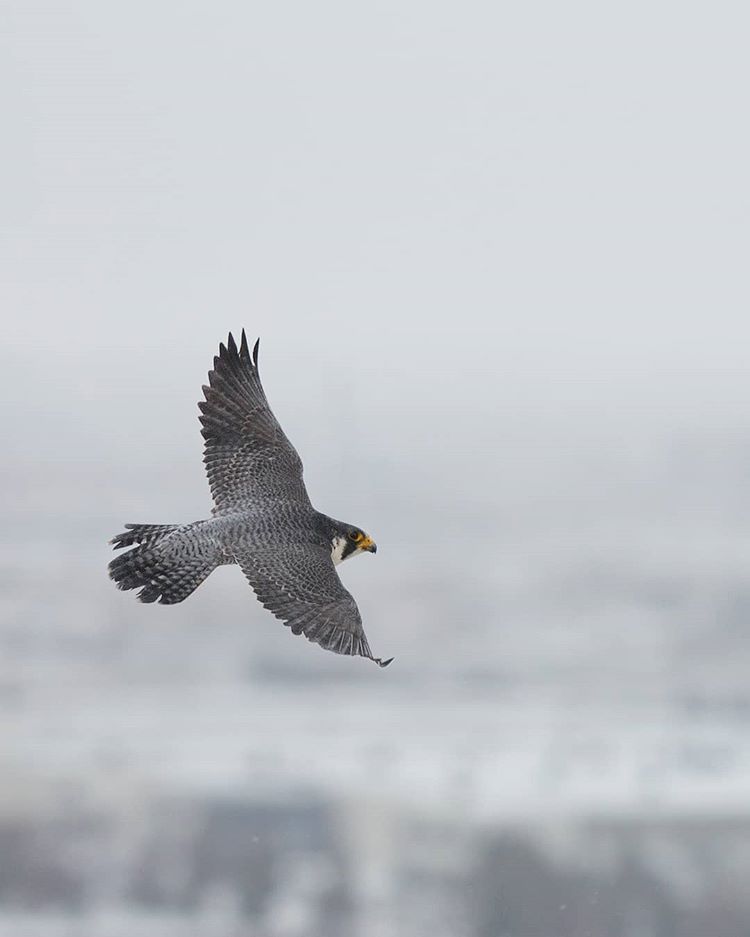
Happy Earth Day everyone! I hope you get a chance to be outside and enjoy the day. It is such a blessing to be able to experience such an abundance of plant and animal life in this world. We really are so privileged to have so much life around us. Let’s each do our parts to be good stewards of our planet, leaving it better than we found it for generations to come. Humankind has definitely done much harm to the planet over the last number of decades, so it is encouraging when you can see signs of this trend reversing. The peregrine falcon, like the bald eagle was on the brink of extinction across North America due to the insecticide DDT. Between new legislations and conservation efforts both majestic birds have made an amazing comeback and are symbols of what we can do when we realize the instant gratifications of our modern lifestyle should always take a backseat to our responsibility to protect our planet.
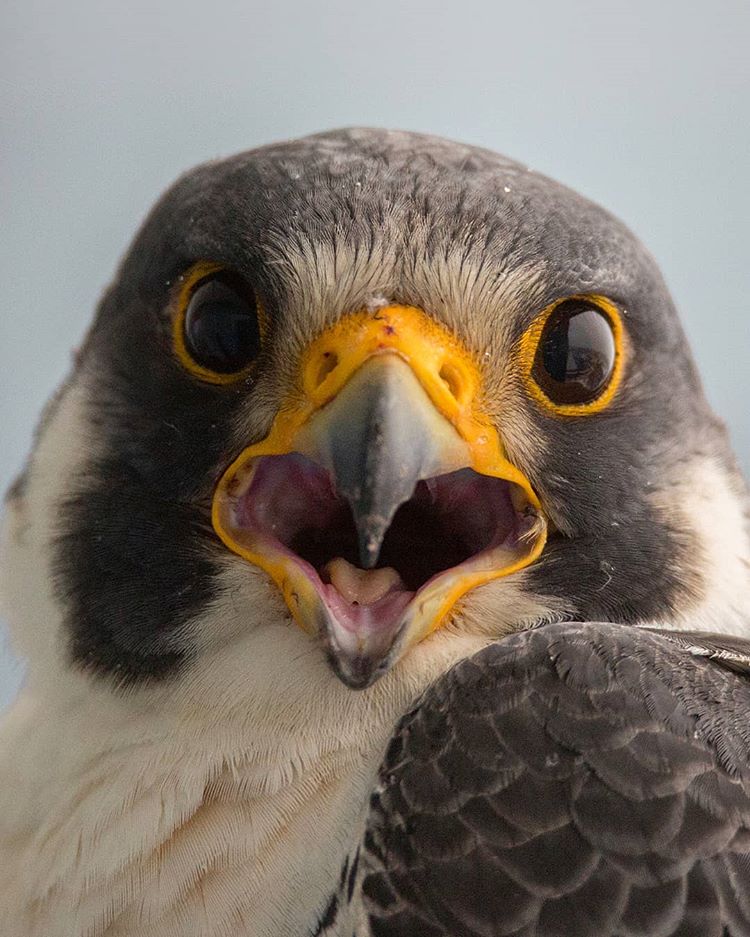
I will never forget this encounter. @elizabeth__bruno and I were watching TV when we heard a loud chirping. We got up and looked on the balcony. Our male peregrine falcon friend came back to pay us a second visit. This time closer than before (only feet from our sliding doors). The sun was setting on a mostly overcast day. There was a beautiful defused golden glow on his white feathers, and an amazing glint in his eyes. I knew I had to act fast before he flew away but I wanted to be very careful I didn’t scare him away while trying to open the door. Thankfully I had my camera all set up and ready to go, but I didn’t want to shoot through the glass, so I decided to slowly open the sliding doors. He didn’t fly away to my amazement. He just continued to stare at us as I pointed my telephoto lens out of the crack in the sliding door opening. I had a little trouble getting focus because he was so physically close but I eventually got it, and got some incredibly close shots. I don’t expect I will ever get the chance to be so close to a wild apex predator again, and one that is in fact the fastest animal in the world!
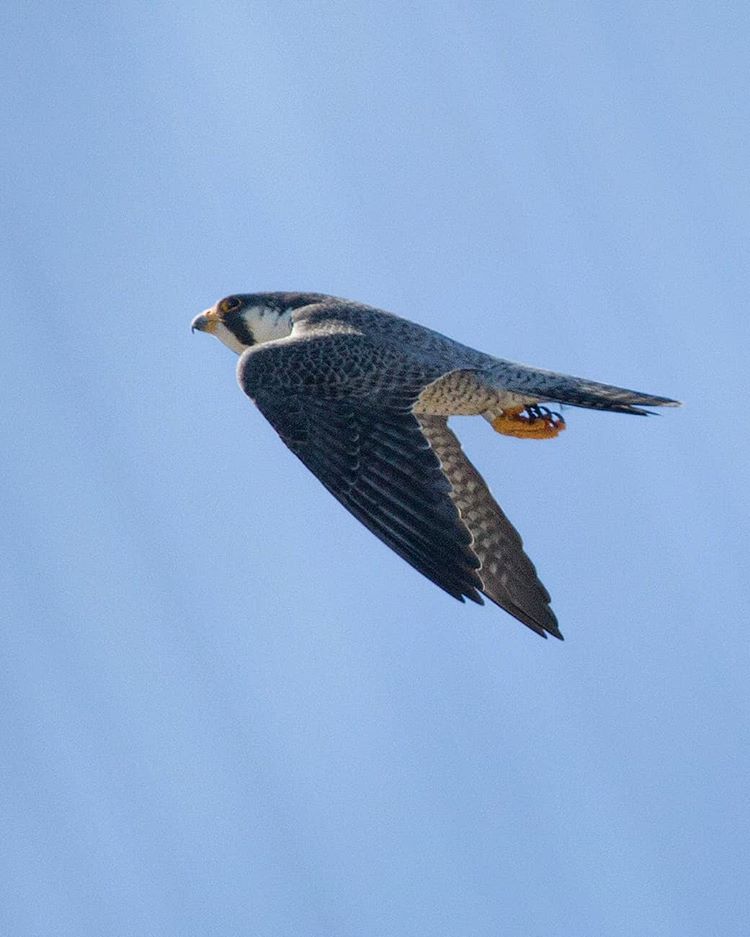
This shot was taken yesterday when the Male peregrine circled in front of our balcony. This pose stood out to me when I reviewed the series of photos I took. It really highlights their beautifully shaped wings. I hope you enjoy. No sightings for today I’m afraid.
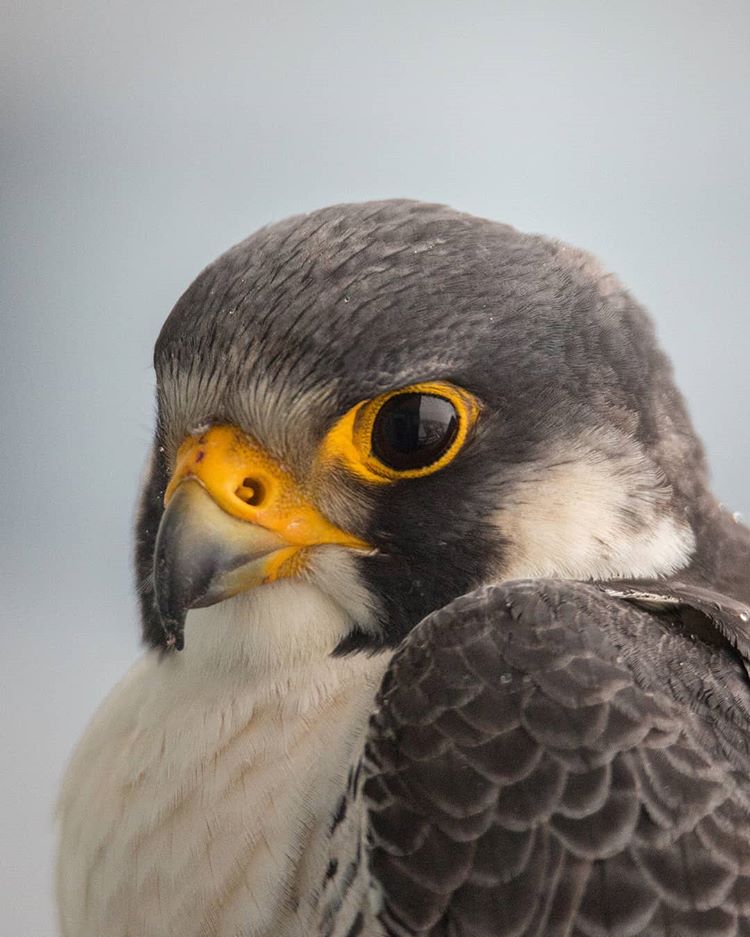
He sort of looks shy in this photo. But don’t let that face fool you. He definitely was not shy when he visited. I love peregrine’s deep coloured eyes and how well they are contrasted against the yellow surrounding it. I never really realized just how fine their feathers are. When you see full body shots of Falcons you are get to see their long wing feathers, but there are so many other intricate areas of their body covered in delicate feathers. I just learned yesterday that scientists using a series of high speed cameras set up along the edge of a dam found that peregrine falcons actually have specialized feathers on their back that will lift up at high speeds to increase their aerodynamic airflow. I just love how we keep learning more and more amazing aspects of this special bird even today!
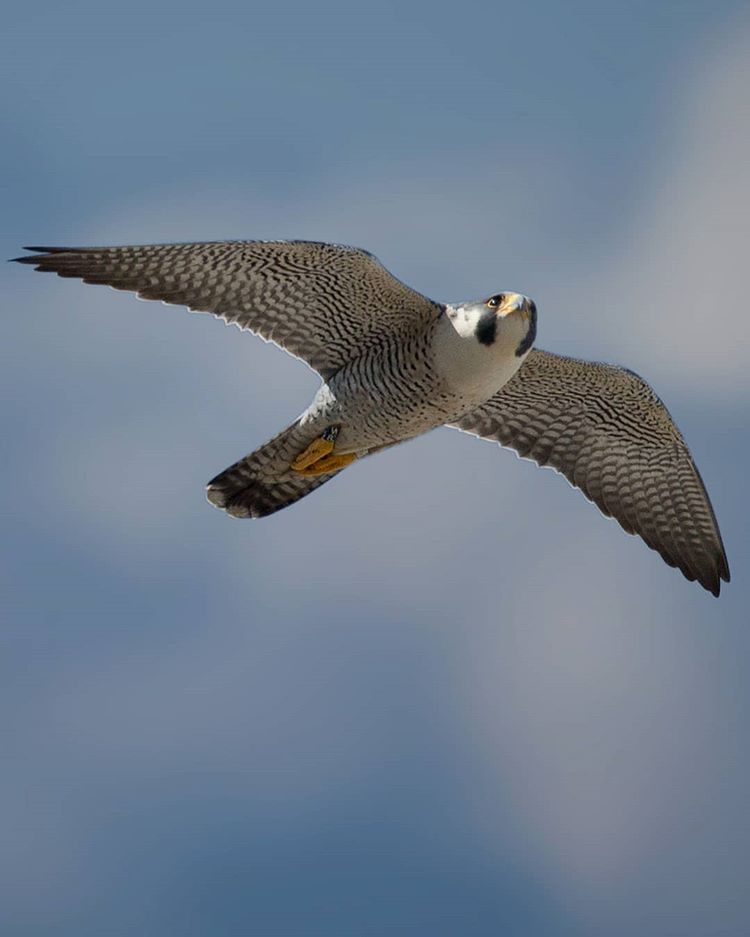
I was watching a BBC Natural World TV show episode that just came out last Thursday. It was titled “Super Fast Falcon”. The whole episode focused on the peregrine falcon. It partly documents a family of falcons growing up on a balcony in urban Chicago, and partially focuses on scientists testing peregrines in flight to learn how they can do the amazing things they do. I am going to post some facts from this show in the next few posts, but I would encourage you to watch it yourself, it’s truly amazing. To start things off, I learned that Falcons have a ratchet-like mechanism for their talons, so that while flying, they do not have to expel any energy to keep their feet tucked up and out of the air stream. When they are ready to land or catch prey, they “unlock” this mechanism and are then good to go, just like landing gear on a plane!
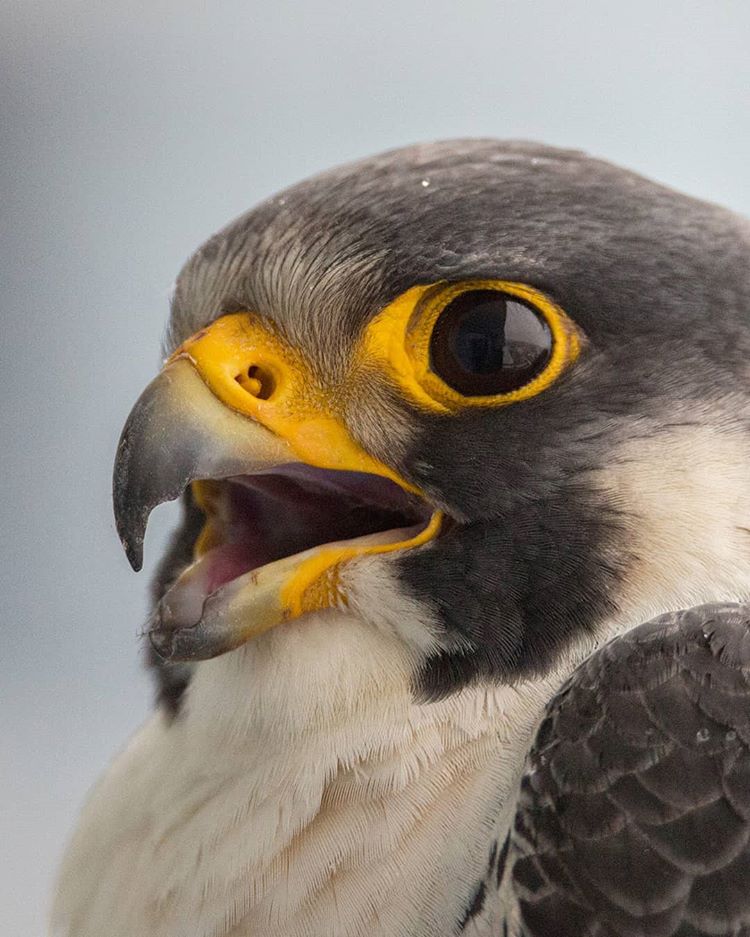
I learned quite a bit more through that BBC show regarding what makes peregrine falcons eyes so special:
1) In humans 5% of our skull is taken up by our eye cavities, but in peregrines it’s a staggering 50%!
2) A falcons vision is twice as sharp as that of hawks!
3) In the eye there is a tiny pit called the fovea, located in the macula of the retina. This area provides the clearest vision. In humans we have one, but peregrines have 2 in each eye. The first is similar to ours, located at the back of the eye, providing binocular vision and normal viewing distance. However, the second fovea is designed for distance viewing (up to 3km away!). This is monocular vision and requires the falcon to look at the target from the side, focusing the light on the side of its eye where the secondary fovea is located. This provides much higher detail but loses the sterioscipic abilities of binocular vision. This is why you will see peregrines turn and tilt their heads in order to lock on their targets.


